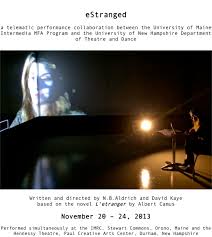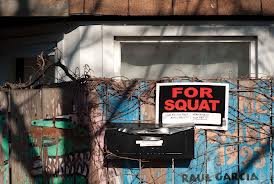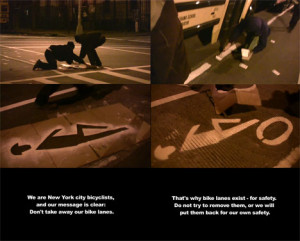The performance I attended was Estranged. This was a very interesting performance to watch because of the amount of technology used at once to bring two audiences, hundreds of miles apart, together into one show. In Maine, we had an actress sitting at a computer, speaking/typing out her thoughts on her facebook page, which was displayed on the corner walls behind her.
In UNH there were many more actors, performing on a stage which seemed to be surrounded by audience members. While we were watching the actress here in Maine, we could also watch the actors in UNH, as they were displayed on the wall as well at certain times throughout the piece.
Going into this performance I was almost sure that there would have been some sort of technical difficulty. Either with connecting to the other campus, or problems on our end displaying the content. However I was completely wrong, as the show seemed to go off without a hitch. It was a little slow paced at times, but the interaction between the actors from both UMaine and UNH made it pretty interesting to watch.
I’d give the performance two BIG thumbs up!
Author Archives: hinmanjd4
Project Network
My immediate local network is all of my friends and family that I can access quickly through use of social media. Simply asking them to like the FB page, and maybe submit a photo of a location would greatly enhance the project.
Another idea for a local network was the local bars such as the Roost and The Bear Brew. We made a simple wooden coaster with a camera design and info about our projects website. If we were to make several of these, and ask that they simply be used to hold someone’s drink, perhaps some people would drunkenly take notice, and maybe even stumble their way onto our website.
There was some talk about having these places offer a ‘prize’ that we could give out to users who submitted the best location, or largest amount of content.)
Contribute To Two Other Projects
Every group seemed to have one thing in common, and that was we all wanted everyone to ‘like’ our facebook pages. Other than that, for the Umaine Motivators, we all came up with a question which is important to us, that we would like to see up on the chalk board. My suggestion was, “How have you helped someone today?”
For the Brave New Maine group, we discussed working on a film to coincide with their website, as well as gave suggestions for story ideas.
Class Make Up Assignment
The performance I attended was Estranged. This was a very interesting performance to watch because of the amount of technology used at once to bring two audiences, hundreds of miles apart, together into one show. In Maine, we had an actress sitting at a computer, speaking/typing out her thoughts on her facebook page, which was displayed on the corner walls behind her.
In UNH there were many more actors, performing on a stage which seemed to be surrounded by audience members. While we were watching the actress here in Maine, we could also watch the actors in UNH, as they were displayed on the wall as well at certain times throughout the piece.
Going into this performance I was almost sure that there would have been some sort of technical difficulty. Either with connecting to the other campus, or problems on our end displaying the content. However I was completely wrong, as the show seemed to go off without a hitch. It was a little slow paced at times, but the interaction between the actors from both UMaine and UNH made it pretty interesting to watch.
I’d give the performance two BIG thumbs up!
Class Project-Step Forward
I was integral in getting the wordpress site actually started/online. For a while we were using my nmd site, jessehinman.nmdprojects.net/filmdatabase, however we have changed to a more universally named, shootmaine.nmdprojects.net/wordpress. I have, along with most of the group, been uploading more and more content to the website, as well as working with everyone else to produce a clean looking, easy to use theme/layout for the database. I’ve also led the group in a few discussions about an “intro video” to the site and/or our project overall.
Class Project Research
These are some key questions we came up with, and the answers our group thought of for them.
How do we gain access to locations? (When could the location be used, and who do filmmakers need to contact to gain access?)
– We need to build connections with the owners of each location that is not public domain, and assure that they would be okay with their location being listed. Under each listing, logistics will be given such as availability, contact info, etc.
How do we deal with potentially illegal locations?
– Although the vast majority of locations we post will be completely legal, some illegal locations are so good it is really tempting to post them. However, we should consult with police and local governments to see what liabilities there are. Jeremy Martin, the Bangor code enforcer may be a resource to help us with this.
Disclaimer: our project should not require any research outside of field work, so we right now we don’t have any internet or print resources to look in to.
Project Timeline
Going under the assumption that we have 5 weeks left, this is our proposed timeline:
Week 1) grant submitted, some locations found and photographed, and format for posts made.
Week 2) get site up and running with locations posted, start polling students.
Week 3) create social media pages and a google docs for people to submit locations and advertise the site.
Week 4) polish website and get more locations
Week 5) continue with week 4 goals
Class Project Proposal 1
NMD 200: Project Proposal
Jesse Hinman
Title: FilME
Idea/Main Goal:
Develop a database of possible film locations to help local students/filmmakers diversify their projects.
Group Members:
– Jesse Hinman
– Caitlin Trafton
– Kyle Fowlie
– Ben Woodbrey
– Patrick Menard
– Zach Marvin
– Zack Davis
Description:
We intend to create a wordpress web site
//////
This solution would require some definite planning. The idea would be to develop a web
page (or other many-to-many vehicle) that could allow directors of all talents access to normally private areas. Local companies and businesses would offer there ‘set’ for a proper incentive (hopefully just a large area of the credits, or use of their products in the film). Ideally, there would be a rather large selection of parking lots, business locations, farms and structures for students to use (both on and off campus). Owners of the space could post available time slots for film-making and then directors could select a time and be given the owners contact information. Obviously there are some possible dangers to this, so precautions would have to be made to ensure the safety of everyone involved as well as the preservation of the property being used.
Research Questions:
What kinds of film sets do people have?
What kinds of film sets are people looking for?
We are looking to take a poll around campus and in particular throughout film classes, asking students both where they have filmed in the past, along with any places they are looking to film in the future. By doing this we would be getting our information right from the source, and avoid wasting our time maybe trying to find a place that no one would want to use.
How do we gain access to locations?
Register Film Group with the Maine Film Office.
Attain permits from wardens for National Parks.
U-Maine is free to students.
Tools:
Video camera
Audio software
HTML/CSS editors
JDK’s (Java development kits)
JavaScript
Personal Skills:
– Music: Zach Davis
– Web-Development: Patrick Menard and Kyle Fowlie
– Film: Ben Woodbrey and Jesse Hinnman
– Editing: Ben Woodbrey
– Graphics: Zach Marvin
– Research/PR: Caitlin Trafton
Major Milestones:
– Research/Find broad range of film locations
– Visually design the site
– Flesh out design via code
– Ability for people to post locations
– Create intro video using the locations?
– Make site live
Bloggety Blog
This is my first, and probably last, blog post on this portfolio. I’m simply proving that my blog is up and running, and viewable to the average user.
Maine Issues
I worked with Environment Maine this past summer hoping to make an impact on this issue. Currently Exxon Mobile is working to pump tar sands through an old oil pipeline that runs right near Sebago Lake. Since thousands of people receive their drinking water from that lake, pumping this highly toxic oil through such an out of date pipeline poses great risks.
Since I worked for Environment Maine, raising awareness of this problem, I felt like now is a great opportunity to help the cause. My first idea is gathering water bottles, filling them with water (and a little bit of oil(tar sands if possible)) and handing them out to people. The label would be made to raise awareness about the cause and could have QR codes, websites url’s, etc…
Handing them out around campus is a good start, but obviously the label would boldly state, DO NOT DRINK!
NMD Strategies Ex 3
Since I missed the day we went over the problems and strategies in groups, instead I’ll write a little about my groups project idea and how it involves New Media strategies. Our idea is to create a website/directory that shows various locations, in the local area, in which students can go to film their student video assignments. This would allow them greater variance in their scenes, avoiding the classic cliche of student dorm rooms for environments.
It would use many-to-many strategies as we would allow for others to recommend various locations, allow people to comment on the places(how large of a space, how easy of access, etc..) and possibly even allow them to upload their student videos, creating a collection of student work that other students can rate/comment.
NMD Strategies Ex 2
Religions Are Divisive
I chose this subject because it seems not only like a fairly interesting one, but it is also a very important one as well. How can we better promote dialogue between Christians, Muslims, Jews, and other Faiths? With a quick brainstorm I came up with a simple idea that embodies the many-to-many principle. A website, or mobile app, set up so that people register with a certain religious belief, and then post information pertaining to their religion. This could be any number of things relating to their religion, but specifically moral, ethical, right vs. wrong subjects would fit the project better.
Then people of other faiths and religious creeds could go onto the website or mobile app and post their information. Certain rights and wrongs would not be the same for different faiths, but some moral and ethical viewpoints could potentially overlap, giving a connection between the two, even though they are viewed to be completely different. With enough people, and enough information from each religious belief, we could get a simple picture of where we differ, and where we are the same. I feel like this could potentially open up dialogue between separate religions, whether positive or negative. (Hopefully positive, but either way, people are communicating)
NMD Strategies Ex 1
Problem 1.) A disappearing language
This problem deals with preserving the Passamaquoddy language from extinction. I would say solution B definitely exemplifies many-to-many, or New Media, much better than solution A. With solution B you are crowd-sourcing the work out to actual Passamaquoddy people, allowing them to contribute to the project by actually pronouncing the words while they tell the stories, and defining the words as well. Solution A seems more like Mass Media, as one group is producing the content, and the average user has no input.
Problem 2.) Neglected Ruins
This problem dealt with capturing the beauty of abandoned buildings so that people could still enjoy them. Again solution B seems to be the better example of many-to-many. This solution allows average explorers to print out stickers that can be scanned by a mobile phone. This stickers are to be place throughout abandoned buildings, and would direct the person who scanned it to more pictures and information on the building. This again crowd-sources the project out to the individuals who would actually use this information, allowing them to actually contribute their input and experience. Solution A however, again, is an example of Mass Media, where one group assembles the content, and everyone gets the same content, with no back and forth exchange of content from the users.
Problem 3.) Misunderstanding Computer Animation
This example was a little difficult, but I would say solution A is the better example, as the user gets some control over the content that they intake. This solution allows the user to “rub” through the layers of the film as it plays. Solution B seems to be a package of content that is distributed and perceived the same by each user, whereas the former solution allowed variability to how the information was received.
Problem 4.) A Broken Fountain
This final problem dealt with what to do with the broken fountain. Solution A, the many-to-many example, offers a garden in which students can pick certain fare from to include with their lunch. This seemed much more like new media than solution B, which is just images and video displayed on the fountain, alongside nature noises. Although it is a very technical solution, the garden seems to fit the many-to-many description much better.
Spontaneous Intervention #2
Spontaneous Intervention #2
Greenaid Seedbomb Vending Machine
http://www.thecommonstudio.com/
http://www.greenaid.co

This project seemed interesting as well, and it also seems to help just as many people as the first project. Seedbombs are a mixture of clay, compost and seeds, and are used to anonymously “Guerrilla Garden.” COMMONstudios, a design firm in LA, California, created a small, coin operated seed bomb dispenser in which business owners can rent or buy. Since 2010 they have installed at least 150 of the vending machines. These seed bombs are a mixture of several different native seeds, hand rolled by workers who are actually homeless people. They are contracted through a LA nonprofit company, Chrysalis, which helps homeless individuals work towards “self-sufficiency.” This project is not only awesome because of the fact that these seed bombs can really green up an area with plant life at an extremely low financial and physical cost, but also because the seeds themselves create jobs for those who are less fortunate, allowing them to make an income through this very genius idea. Crowd-sourcing is a large part of this project, and a major goal is to “green-up” urban areas, so having very low cost, very low effort “seed bombs” which practically plant themselves utilizes those who would like to impact their environment, making the burden of the goal much lighter. Also, it shares something that was inaccessible. Through this project, many jobs were created for only homeless people, which is a huge thing when considering most jobs are not geared towards homeless people. It also employs the DIY strategy of New Media, as well as tapping into local networks, as most of the vending machines and employees of Chrysalis are based in LA.
Spontaneous Intervention #1
Spontaneous Intervention #1
For Squat/Reuben Kincaid Realty
http://www.publicmediainstitute.com/
www.reubenkincaidrealty.com
This first project I looked at I thought was just incredible. With foreclosures and evictions happening all over the nation, people look to find suitable housing. This project attempts to deal with that problem. The Public Media Institute, PMI, started Reuben Kincaid Realty, in order to fight for the basic human right to shelter. A simple sign, much like the average “For Sale” sign, but instead with “For Squat” on it, is posted up on an abandoned house. You then take a picture of the sign on the house and email the photo to a Reuben Kincaid Realtor. They put it in their database, find out how long it’s been vacant, whether or not a bank owns it, and attempts to much it up with someone they determine needs it. Visiting the website, www.reubenkincaidrealty.com, you can download a sign to print and put up on an abandoned house, search for properties that are “for squat” and even learn more about their How to Squat Handbook, and the first time Just Squatted Home Welcoming Kit. The site also references data about the overwhelming forclosure and homeless problem the nation faces today. This uses many New Media strategies, such as crowd-sourcing to find the abandoned buildings, sharing what was inaccessible (a home for a homeless person), and DIY.
NMD 341: Assignment 2
Shark: Figure/Ground Relationship
This is my design for the second assignment of NMD 341: Digital Narative.
Ghost Bikes
On the topic of safer streets for cyclists, there is another project aiming to promote bicycle safety. At the same time it serves two other purposes; one as an aesthetically appealing work of art, and two, as a memorial to those who have died in bicycle/motor-vehicle collisions. These are known as ghost bikes. Bicycles painted completely white, often covered in an appealing floral arrangement, rest chained to signs located at or near the site of an accident, often including a plaque displaying the name, age and sometimes a photo of the unfortunate victim. Ghost bikes first appeared in 2003, created in St. Louis, Missouri. This thoughtful and inspiring idea quickly spread, and since its creation, has appeared in over 150 locations around the world. GhostBikes.org, a website set up by The NYC Street Memorial Project, documents all of the memorials online. I feel this is a great project, as it serves as a beautiful memorial for those who are gone, and a blatant reminder to motorists to be aware of the damage they can cause by not being careful enough. The cost of this project is minimal, as it only requires an old bike, white paint, and an arrangement of flowers.
Guerrilla Bike Lanes
With the price of fuel rising, many people are turning to alternative forms of transportation. One of the best ways to move around quickly, while still staying active, is to ride a bicycle. However, even though there are laws that demand motor vehicle operators to “share the road” with cyclists, many people are injured, or even killed while biking. In 2009, 630 bicyclists were killed and 51,000 were injured (edgarsnyder.com) A large reason why so many accidents occur is because heavily trafficked, urban cities are just not adapting to a more bicycle friendly infrastructure.
Dubbed as guerrilla bike lane painters, cycling advocates around the world, and across the nation are, often in the middle of the night so as to avoid any trouble from the law, painting bike lanes on the side of the streets, as well as signs around the roads to better remind motorists to be cautious of anyone nearby trying to share the road. Toronto’s Urban Repair Squad is known as the pioneer of this practice, but a large group of activists known as the Department of D.I.Y. (Do-it-yourselfers) are doing the same thing in Los Angeles. This spontaneous intervention project is great for the community, and promotes eco-friendly practices like using a bicycle as transportation, as opposed to relying on fossil fuels. It is fairly inexpensive to do, costing around $200 for tools and materials, and creates a much safer way for cyclists to navigate the crowded urban streets of dense cities.
http://www.edgarsnyder.com/bicycle/bicycle-statistics.html
http://www.spontaneousinterventions.org/project/guerrilla-bike-lanes
Hello curious viewers!
Welcome to my portfolio. Here I will post news and updates about the various projects I’m working on, projects I’ve already completed, and projects I find other people are working on that interest me.









